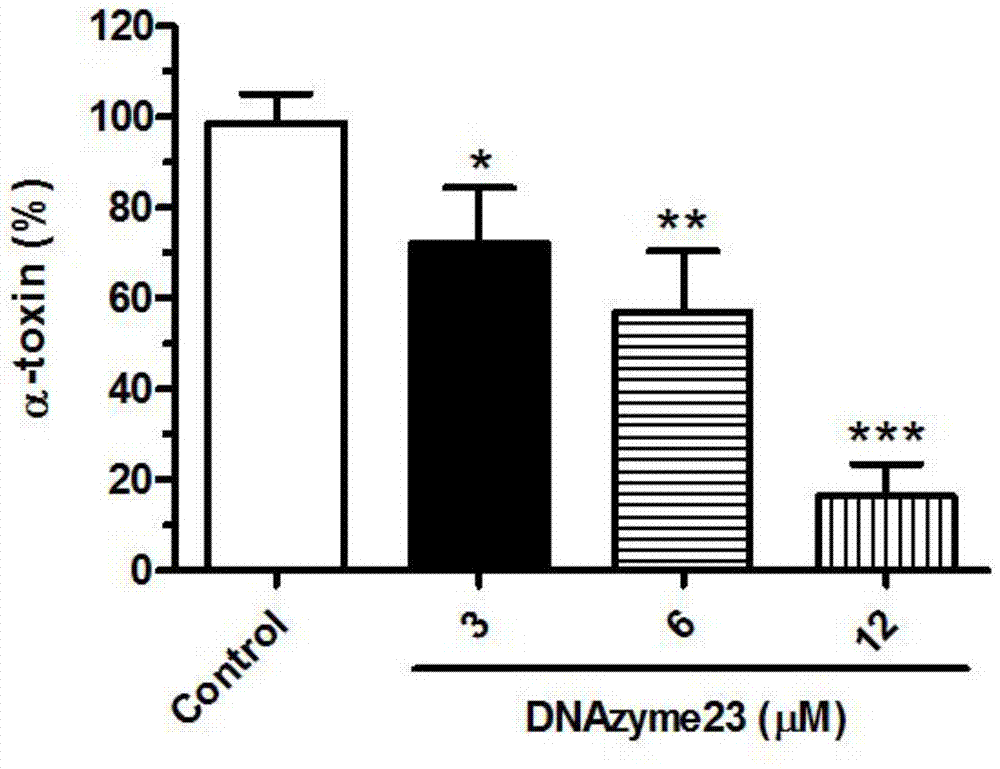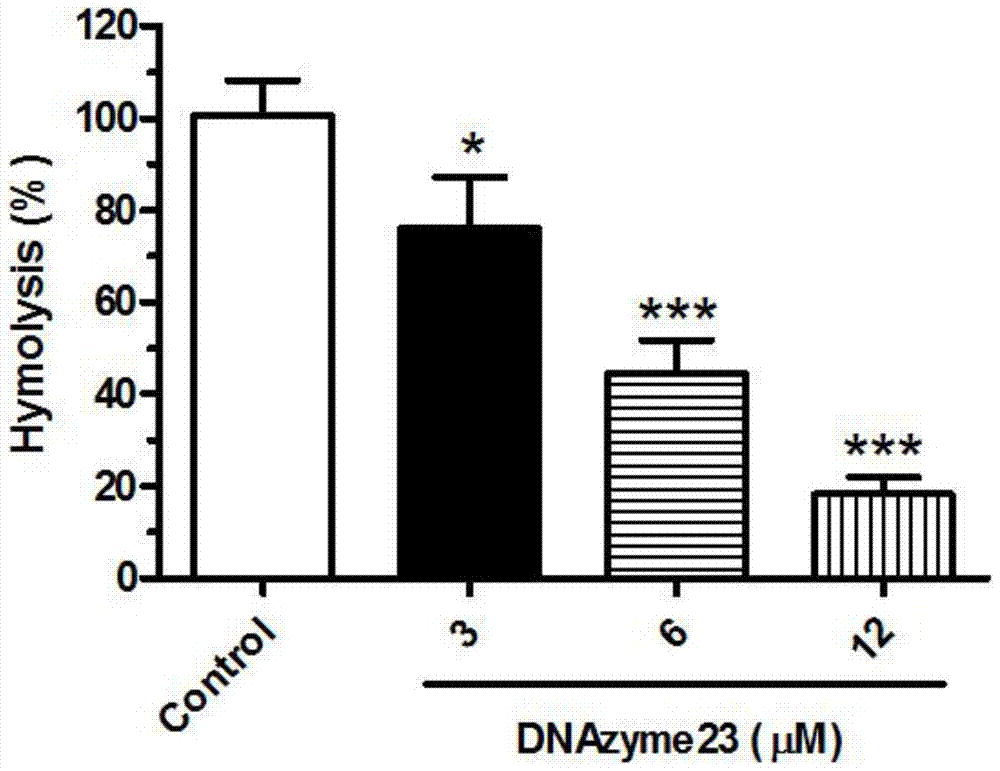Application of an antisense deoxyribozyme against mrsa quorum sensing agr system
A DNAzyme, antisense technology, applied in the field of molecular biology, to achieve the effect of reducing secretion, high specificity, and not easy to increase bacterial drug resistance
- Summary
- Abstract
- Description
- Claims
- Application Information
AI Technical Summary
Problems solved by technology
Method used
Image
Examples
Embodiment 1
[0017] Example 1 Design, synthesis and screening of DNAzyme against Staphylococcus aureus RNAIII mRNA
[0018] (1) Screen the effective targets of RNAIII mRNA and design specific and efficient DNAzyme: use RNAStructure4.5 software to analyze the sequence of RNAIII mRNA in detail and predict its secondary structure, with 30 bases as the basic length of DNAzyme, in the non-conserved sequence region , non-folding region to select effective targets, and screen out the best 7 DNAzymes (see Table 1).
[0019] Table 1 Deoxyribozyme (DNAzyme) designed for RNAIII mRNA
[0020]
[0021] Note: The underline in the sequence column represents the catalytic active center of DNAzyme.
Embodiment 2
[0022] Example 2 DNAzyme study on the minimum inhibitory concentration of LAC
[0023] The micro-plate MIC assay method is used as a screening method for effective antibacterial antisense targets. The inventors first measured the MIC of 7 anti-RNAIII DNAzyme sequences (anti-RNAIII DNAzyme 23, 70, 72, 105, 109, 232-1 and 232-2) to LAC, and the results showed that none of the 7 DNAzymes had antibacterial activity ( See Table 2).
[0024] Table 2 The minimum inhibitory concentration (MIC) of DNAzyme to LAC
[0025]
Embodiment 3
[0026] Example 3 RT-PCR detection of the influence of DNAzyme on the expression changes of RNAIII
[0027] The fresh overnight cultured bacterial solution was transferred to the nutrient broth medium, and cultured at 35°C and 210rpm until the mid-logarithmic growth phase, and different concentrations of DNAzyme23 were added to the culture medium, and incubated for 6 hours. After the culture, the bacteria were collected, the total RNA of the bacteria was extracted by the Trizol method, and the cDNA obtained by reverse transcription was used as a reaction template. The RT reaction conditions were: 37°C, 60min, and PCR was performed after ice bathing. PCR reaction conditions: pre-denaturation at 95°C for 2min, denaturation at 95°C for 30sec, annealing at 55°C for 30sec, extension at 72°C for 30sec, 40 cycles. PCR primers: 5'-TTCAATGGCACAAGAT-3' and 5'-GTCCAAGGAAACTAAC-3'. figure 1 The results showed that the three sequences of DNAzyme23, DNAzyme72 and DNAzyme232-1 among the sev...
PUM
 Login to View More
Login to View More Abstract
Description
Claims
Application Information
 Login to View More
Login to View More - R&D
- Intellectual Property
- Life Sciences
- Materials
- Tech Scout
- Unparalleled Data Quality
- Higher Quality Content
- 60% Fewer Hallucinations
Browse by: Latest US Patents, China's latest patents, Technical Efficacy Thesaurus, Application Domain, Technology Topic, Popular Technical Reports.
© 2025 PatSnap. All rights reserved.Legal|Privacy policy|Modern Slavery Act Transparency Statement|Sitemap|About US| Contact US: help@patsnap.com



